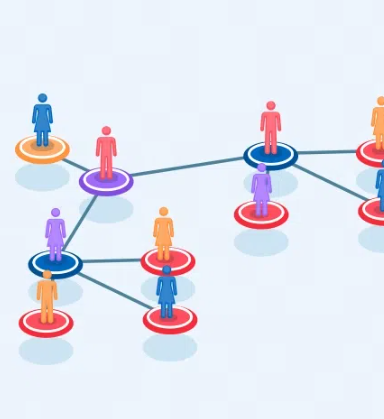
A Complete Guide to Stakeholder Mapping: How to Create and Use It Effectively
In project management, communication is crucial for success. According to the Project Management Institute (PMI), 56% of projects fail due to poor communication. This highlights the importance of understanding all parties involved in a project, both internally and externally. One way to ensure clear communication and smooth collaboration is through stakeholder mapping.
Stakeholder mapping helps you identify the needs, roles, and expectations of everyone involved, ensuring your project runs efficiently. However, despite its importance, many people are still unsure about how to create an effective stakeholder map. If you’re in the same boat, this guide will help you understand the process and how to use it in your projects.
What is Stakeholder Mapping?
Stakeholder mapping is a process used in project management to visualize the individuals or groups who impact or are impacted by a project. The map helps identify both internal and external stakeholders and outlines your relationship with them. This visualization allows you to understand who holds the most influence and how to engage with them effectively.
When should you create a stakeholder map? Here are a few scenarios:
- Running a project: Before starting, stakeholder mapping helps gain support from key decision-makers, ensuring your proposal aligns with their interests.
- Developing a new product: Understanding the preferences of stakeholders, especially investors and decision-makers, is crucial to securing their backing.
- Targeting a new market: External stakeholders, such as potential customers and partner businesses, can be pivotal in achieving your business goals.
Understanding both internal and external stakeholders and their needs is essential to building solid engagement and ensuring project success.
Why is Stakeholder Mapping Important?
Stakeholder mapping offers more than just identifying key parties—it’s a strategic tool that can greatly influence your project’s outcome. Here are some key benefits:
- Clear Communication: Tailor your communication strategies to each stakeholder, keeping everyone in the loop and minimizing misunderstandings.
- Efficient Use of Resources: Focus your energy on the most influential stakeholders, as not all will have the same level of interest in the project.
- Conflict Prevention: Mapping stakeholders helps you spot potential conflicts early, allowing you to address them proactively.
- Faster Decision Making: Knowing who to prioritize and understanding their concerns helps speed up the decision-making process, leading to quicker progress.
In summary, stakeholder mapping is a powerful tool that helps ensure your project progresses smoothly, meets objectives, and satisfies stakeholder expectations. Always create a stakeholder map before embarking on any major project to streamline your work process.
Different Techniques for Stakeholder Mapping
There are several methods for creating stakeholder maps, each suited for different types of projects. Choosing the right technique is key to tailoring your approach. Here are some popular techniques:
Power-Interest Grid
This method classifies stakeholders based on their level of influence and interest in the project. It’s a great choice for prioritizing stakeholders, helping you focus on those with the most power and interest. The grid typically divides stakeholders into four quadrants, each requiring a different level of engagement.
Salience Model
Unlike the power-interest grid, the salience model uses three criteria to classify stakeholders: power, legitimacy, and urgency. This model is often represented through Venn diagrams, where the attributes intersect. The salience model is useful for complex projects that require a deeper understanding of which stakeholders need the most attention.
Power-Dynamism Matrix
This method categorizes stakeholders based on their power and the level of dynamism they bring to the project. It’s particularly useful when the voices of stakeholders are vital to the project’s direction and outcome.
Stakeholder Knowledge Base Chart
This approach is focused on understanding the knowledge level of each stakeholder regarding the project. It helps you adjust your communication approach based on each stakeholder’s understanding and engagement level.
How to Create Stakeholder Mapping
Now that you know the benefits and techniques, you might be wondering how to create a stakeholder map. Here’s a simple step-by-step guide:
- Identify Stakeholders: List everyone who has an interest in your project, both inside and outside your organization.
- Analyze Their Influence and Interest: Determine the level of influence and interest each stakeholder has to understand how much attention they require.
- Categorize Stakeholders: Use a grid to categorize stakeholders based on their influence and interest levels. This helps you decide where to focus your efforts.
- Choose the Right Framework: Depending on your project, select the most appropriate stakeholder mapping technique that fits your needs.
- Monitor and Adjust: As the project progresses, stakeholder interests and levels of involvement may change. Regularly update your map to reflect these changes.
Once you’ve created your map, it’s crucial to maintain ongoing communication with stakeholders and adapt as needed. The map itself should be simple and easy to understand, providing clear insights into how to engage with each party effectively.
Final Thoughts
Stakeholder mapping is a powerful tool that can greatly contribute to the success of your project. By understanding the influence and interests of all parties involved, you can prioritize communication and engagement efforts, reduce conflicts, and ensure smoother decision-making. Take the time to create an effective stakeholder map, and you’ll be on your way to building strong relationships and driving project success.